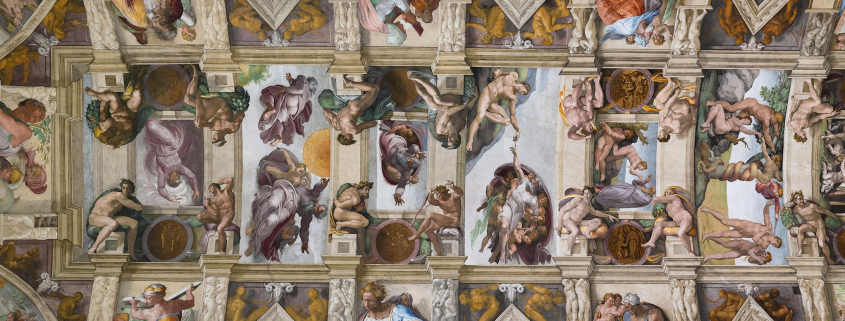The New Renaissance: The constant search for beauty

“The true work of art is but a shadow of the divine perfection.”
These were the words of Michelangelo Buonarroti. For the man who depicted divinity on the walls and ceiling of the Sistine Chapel, such a standard for divine perfection seems appropriate. But he was not the only artist to hold this belief.
Michelangelo has been referenced countless times throughout art and literature; however, one piece that clearly aligns with the artist’s perception of art being in the shadows is Oscar Wilde’s novel, “The Picture of Dorian Gray.”
This novel, a meditation on physical beauty, directly references Michelangelo within its first few chapters. The story centers around Dorian Gray, a young man renowned for his beauty, and Lord Henry, an older man in the same social circle as Dorian, analyzes how beauty is Dorian’s greatest asset and will allow him to accomplish whatever he wants in life. While contemplating the beauty of Dorian Gray, Lord Henry realizes that the patterns and shapes in life “were themselves patterns of some other and more perfect form whose shadow they made real.”
If this is not a clear enough evocation of Michelangelo’s outlook on art, then it is blankly stated when Lord Henry remembers “something like it in history. Was it not Plato, that artist in thought, who had first analyzed it? Was it not Buonarotti who had carved it in the coloured marbles of a sonnet-sequence?”
Wilde also connects the shadow of the divine to Plato, whose philosophy stresses that art is a false knowledge of reality. Art is a mere reciprocation of what is real, not a further development of what is known to be true.
This echoes Michelangelo once again, stressing that art, despite its beauty, will always be missing something. A fundamental level of truth is absent when man recreates something born of nature, which is why true art is a mere shadow of divine perfection.
What connects Oscar Wilde, Michelangelo and Plato is their unanimous belief that, while art is limited, it offers a window into a universe of perfection unattainable to man. There is something about the divine perfection beyond conception that is generically appealing.
The heart of man craves beauty just as he craves the divine.
There is no denying the aesthetic appeal of beauty. When looking upon Michelangelo’s “David,” or standing under the frescoes of the Sistine Chapel, it is a momentarily transformative experience. The feeling of losing oneself in the narrative and life story of a piece of art is the closest experience one can have to something divine. It is the feeling, the emotion, the intangibility of the human experience that makes art worthwhile.
Going back to Plato’s philosophy and Michelangelo’s approach to art, this raises one fundamental paradox: Why is it that the most tangible things — a sculpture, a painting, a book — are the objects that can evoke the most intangible feelings of understanding, peace and pleasure in the human mind?
“The Picture of Dorian Gray” addresses this through Dorian’s own obsession with physical beauty. The desire-turned-madness of his character to preserve youth and untouched beauty is forever symbolized through the role reversal of Dorian Gray — the person and the painting.
Perhaps that is why art can be nothing more than a shadow of the divine. If man cannot bear the weight of such beauty, how are we meant to bear the weight of perfection?
The inaccuracies and the inauthenticity of art are what tether it to earthliness and mankind. For every piece of art, there will be something to be improved and, as Plato said, every piece of art will replicate something already existing.
It is the inability of man to create something so perfect and so new, yet have just enough beauty to be a reflection of the divine, that leaves art as a shadow of perfection.
Still, artists strive to encapsulate and project the divine. But knowing that it is impossible to fully attain, art will forever remain in the shadows whilst making the world of perfection more real and desirable.
Jina Umakanthan is a freshman writing about the relationship between present and past artwork. Her column, “The New Renaissance” runs every other Monday.

